Complete Guide to Solving Common Home Gardening Issues 2025
Gardening can be a rewarding hobby, but it’s not without its challenges. Whether you’re dealing with pests, diseases, or environmental factors, understanding the root cause of your garden’s problems is essential for effective solutions. In fact, a recent survey showed that 60% of gardeners face pest-related issues, while 45% struggle with plant diseases each year. If you’ve noticed wilting leaves, unusual spots, or critters in your garden, you’re not alone. Thankfully, most home gardening issues can be identified early and addressed with the right approach.
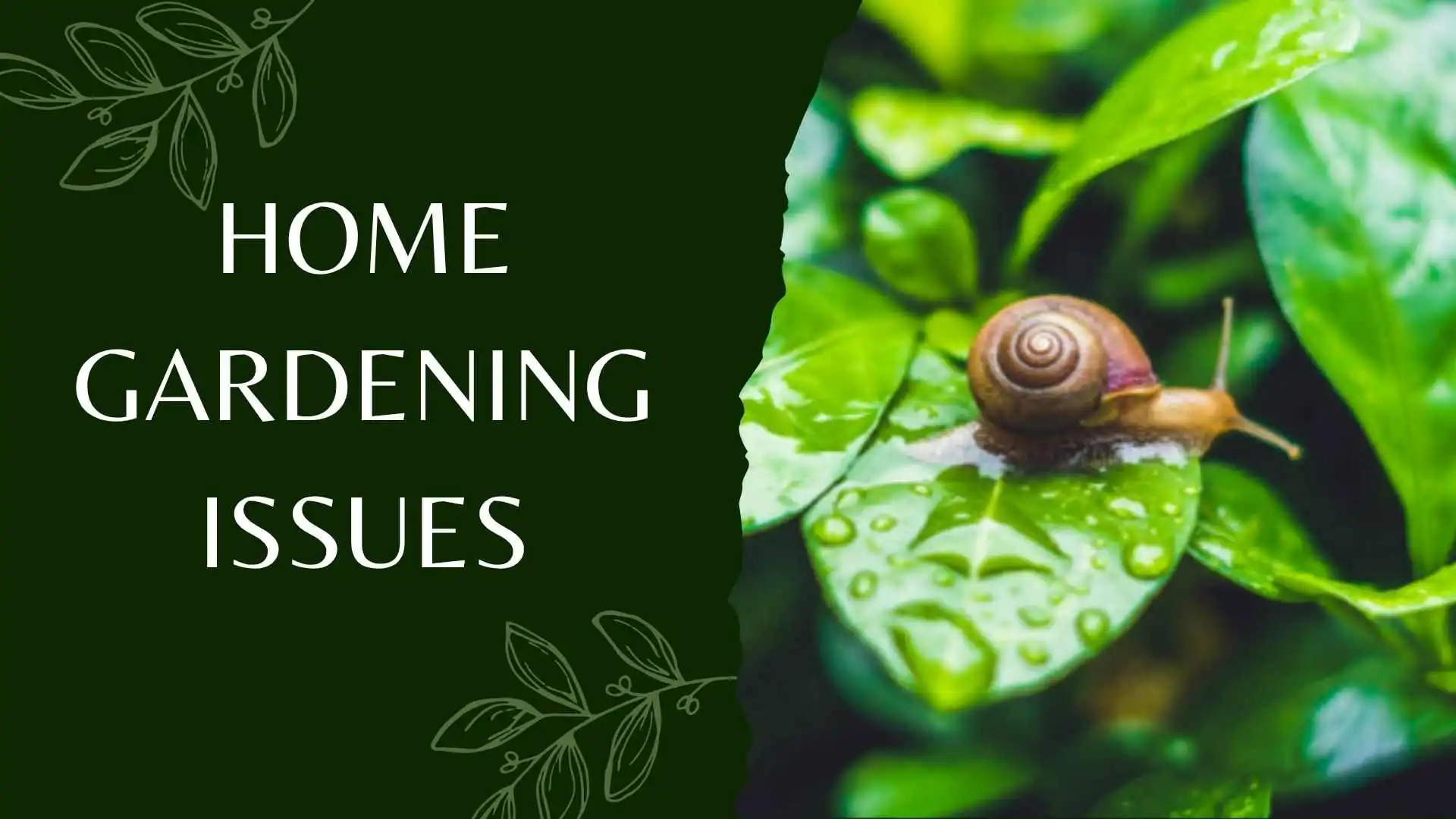
To keep your garden healthy, the first step is recognizing the home gardening issues. Pests such as aphids and beetles can damage your plants quickly, but using organic repellents can help. Common diseases like powdery mildew or blight can be treated with natural fungicides, and ensuring your plants have the right amount of water and sunlight can prevent many common issues. Proper soil care and seasonal maintenance are also key to a thriving garden. With the right knowledge and tools, you can protect your plants and enjoy a bountiful garden year-round.
If you want to learn complete tips for growing plants, flowers and vegetables at home then please visit Home Gardening.
Understanding the Most Common Home Gardening Issues
Home gardeners often face a variety of challenges, with pests, diseases, and environmental stress being the most common. In 2025, nearly 60% of gardeners report dealing with pests like aphids, beetles, and caterpillars that can damage plants and flowers. Meanwhile, plant diseases such as blight and powdery mildew are also frequent, affecting nearly 40% of gardens annually. These issues can quickly harm your garden, but identifying them early is key to finding the right solution.
To tackle these problems, start by regularly checking your plants for signs of damage, like yellowing leaves or wilting. For pests, using organic repellents or introducing natural predators, such as ladybugs, can help control infestations. To fight diseases, prune affected plants and apply eco-friendly fungicides to prevent further spread. By ensuring your garden has good soil, proper watering, and adequate sunlight, you can minimize the risk of these common problems and enjoy a healthy, thriving garden all year long.
| Problem | Signs & Symptoms | Solution |
|---|---|---|
| Pests | Holes in leaves, wilting, sticky residue | Use natural repellents like neem oil, introduce beneficial insects |
| Diseases | Yellowing leaves, dark spots, mold or mildew on leaves | Prune affected parts, use organic fungicides, improve airflow |
| Environmental Stress | Wilting, browning, stunted growth due to extreme heat or frost | Provide shade, water correctly, cover plants in extreme weather |
Pests – Identifying the Culprits in Your Garden
Pests are one of the most common problems gardeners face. Insects like aphids, caterpillars, and beetles can cause damage by feeding on plants, leaving behind holes or yellowed leaves. A 2025 study shows that 55% of gardeners struggle with pest infestations every year, which can slow plant growth and affect garden health.
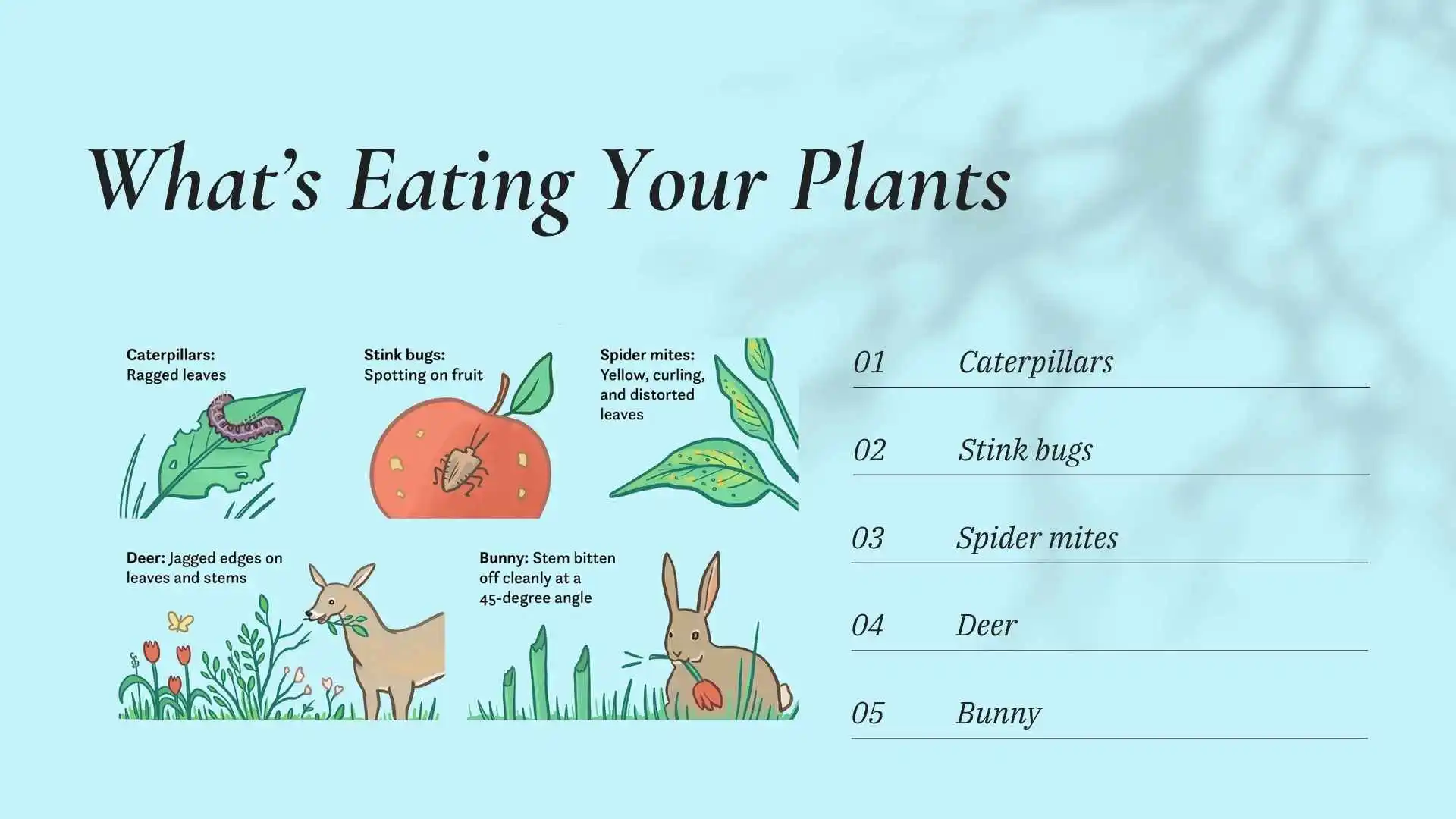
To identify pests, check for visible insects on your plants, particularly on the underside of leaves or along stems. Look for signs such as damaged leaves, sticky residue, or holes in your plants. If you spot pests, try using natural methods like insecticidal soap or attracting beneficial insects to keep them under control. Quick action can help protect your garden and prevent further damage.
Diseases – How to Spot and Treat Plant Infections
Plant diseases can cause severe damage to your garden if not detected early. Fungal infections like powdery mildew and blight are common, causing discolored leaves or spots on plants. In 2025, around 40% of gardeners report dealing with plant diseases, making it important to recognize symptoms early to avoid the spread of infection.
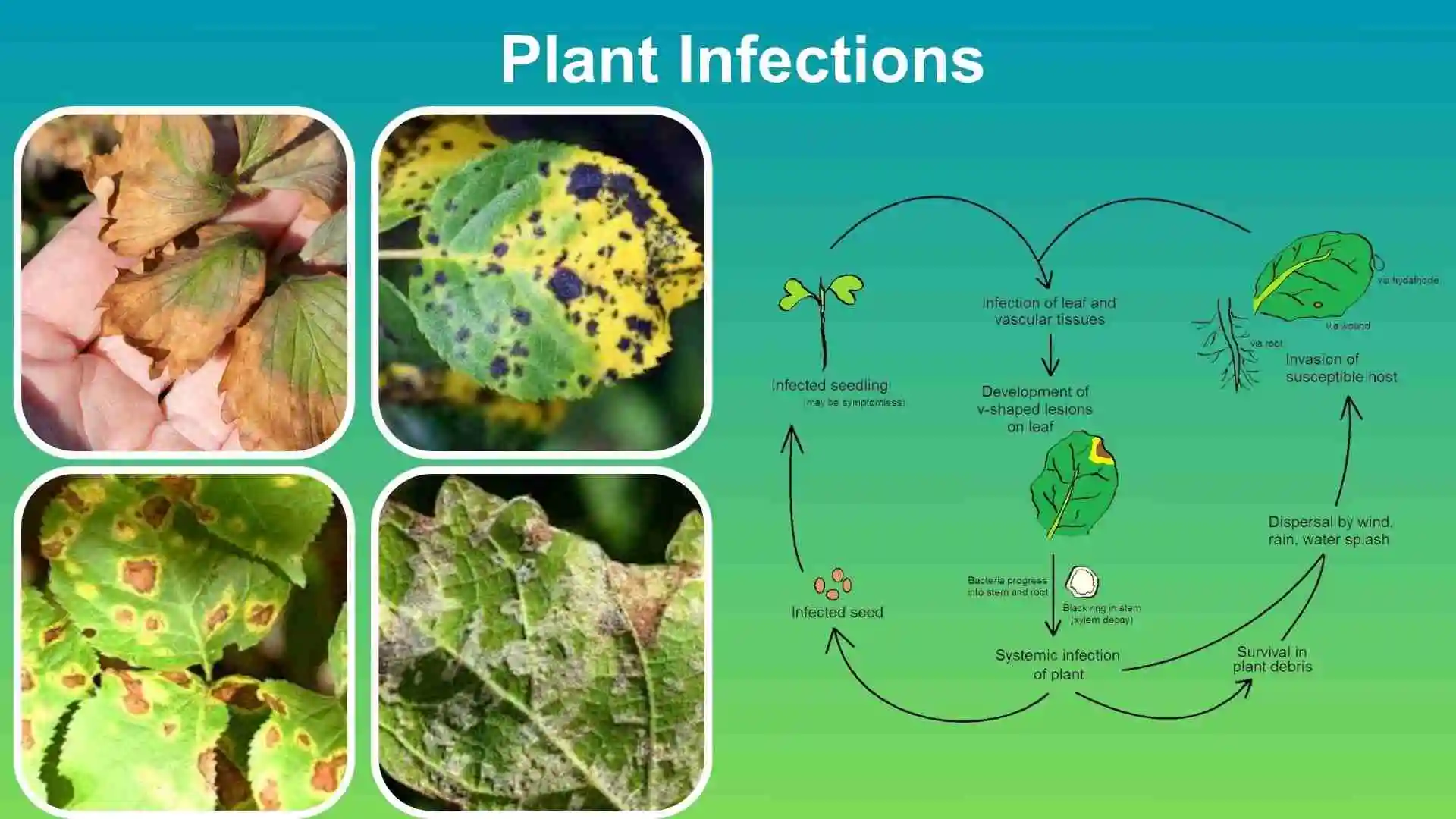
To spot plant infections, check your plants for signs like wilting, yellowing, or brown spots. You may also notice a fuzzy or powdery substance on the leaves or stems. Treat infections by removing affected parts of the plant, using eco-friendly fungicides, or improving airflow around plants. Regular checks and proper care can help prevent many common plant diseases and keep your garden healthy.
Environmental Factors – How Weather Affects Your Garden
Weather plays a big role in the health of your garden. Extreme heat, heavy rainfall, or frost can damage plants, stunt their growth, and even lead to disease. In 2025, climate change is causing more unpredictable weather patterns, making it even more important for gardeners to understand how to protect their plants from these changes.
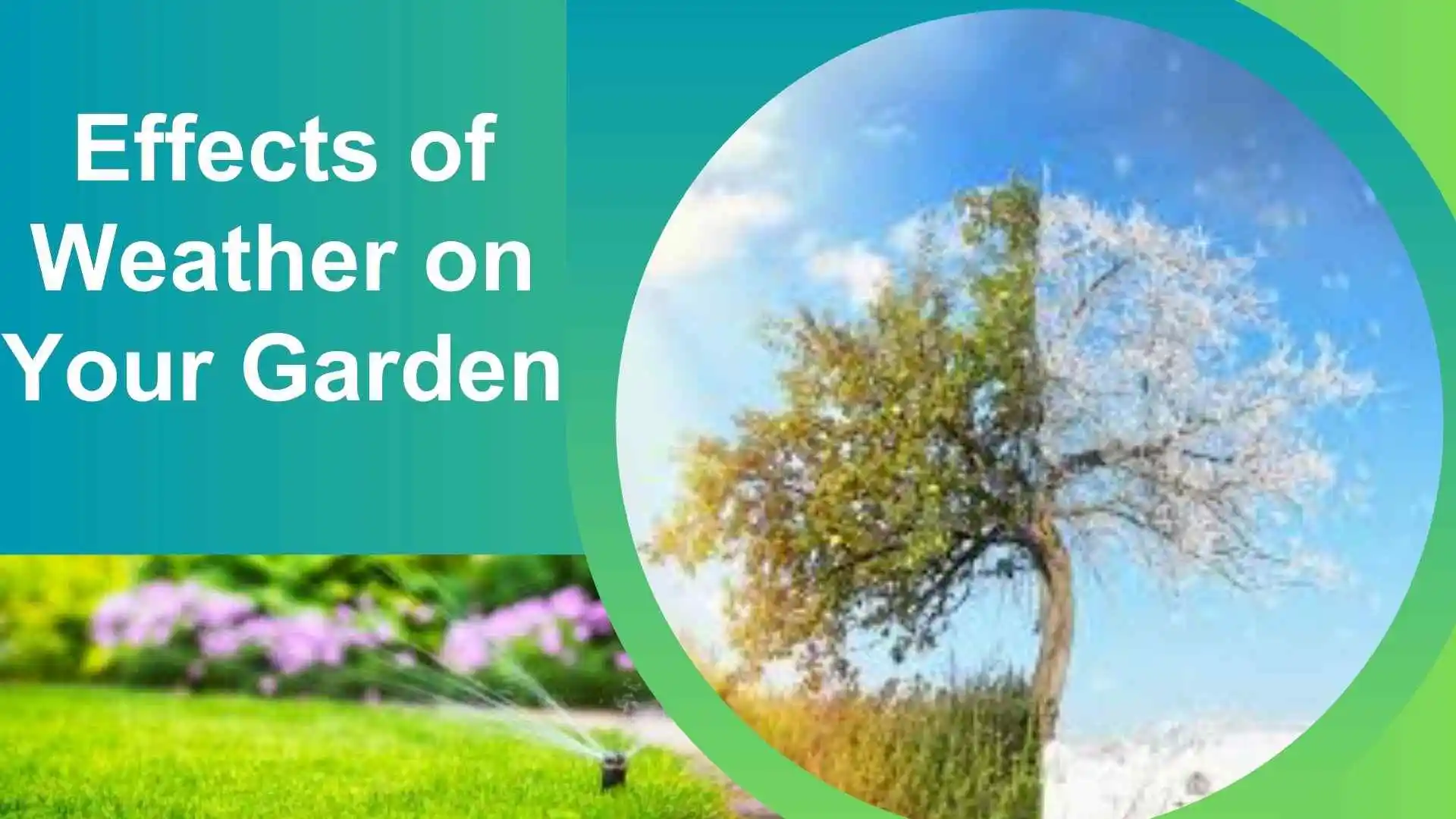
To safeguard your garden, ensure plants are properly watered during dry spells, and use mulch to help retain moisture. In colder months, cover plants to protect them from frost and wind. By adjusting your care routines based on the weather, you can help your garden thrive despite changing environmental conditions.
Preventing and Managing Garden Pests
Garden pests can quickly turn your beautiful garden into a disaster. From small insects like aphids to larger pests like rabbits, they all cause harm to your plants. In 2025, more gardeners are finding ways to handle pests without relying on harmful chemicals. Instead, they are turning to natural and organic solutions to prevent pest damage while keeping their garden healthy.
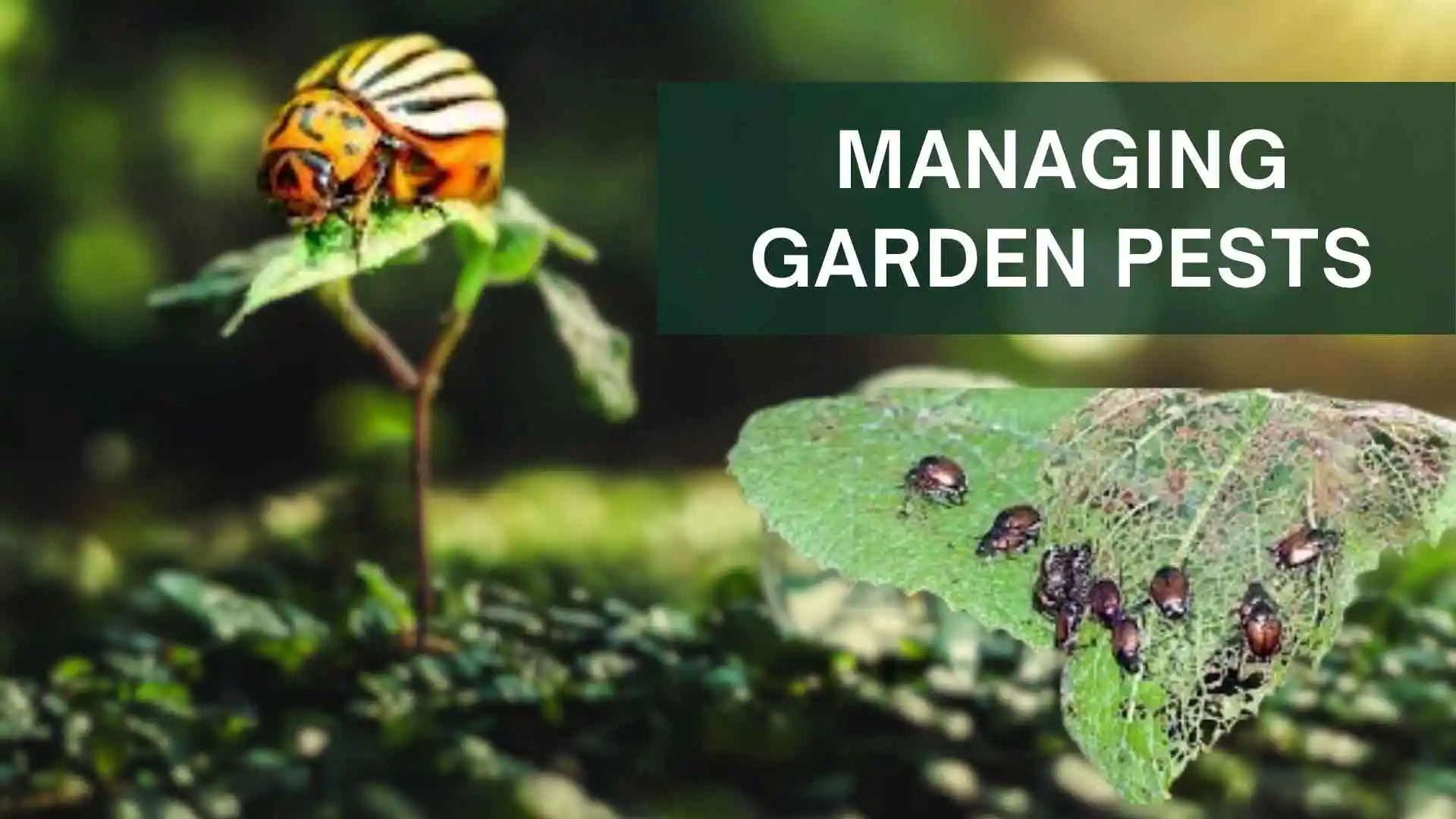
Managing pests is all about staying on top of potential problems. Early identification and treatment can make all the difference. With the right methods, like using natural repellents or introducing beneficial insects, you can control pests effectively. Regular home gardening issues checks and proper care can keep pests at bay and ensure a healthy growing environment.
Natural Remedies for Common Garden Pests
Natural remedies are a safe and effective way to deal with common garden pests. Neem oil, garlic spray, and diatomaceous earth are popular choices that many gardeners use. These natural solutions can target pests like aphids, beetles, and slugs, disrupting their feeding or creating an environment where they can’t survive. Neem oil, in particular, is gentle on plants but tough on harmful bugs.
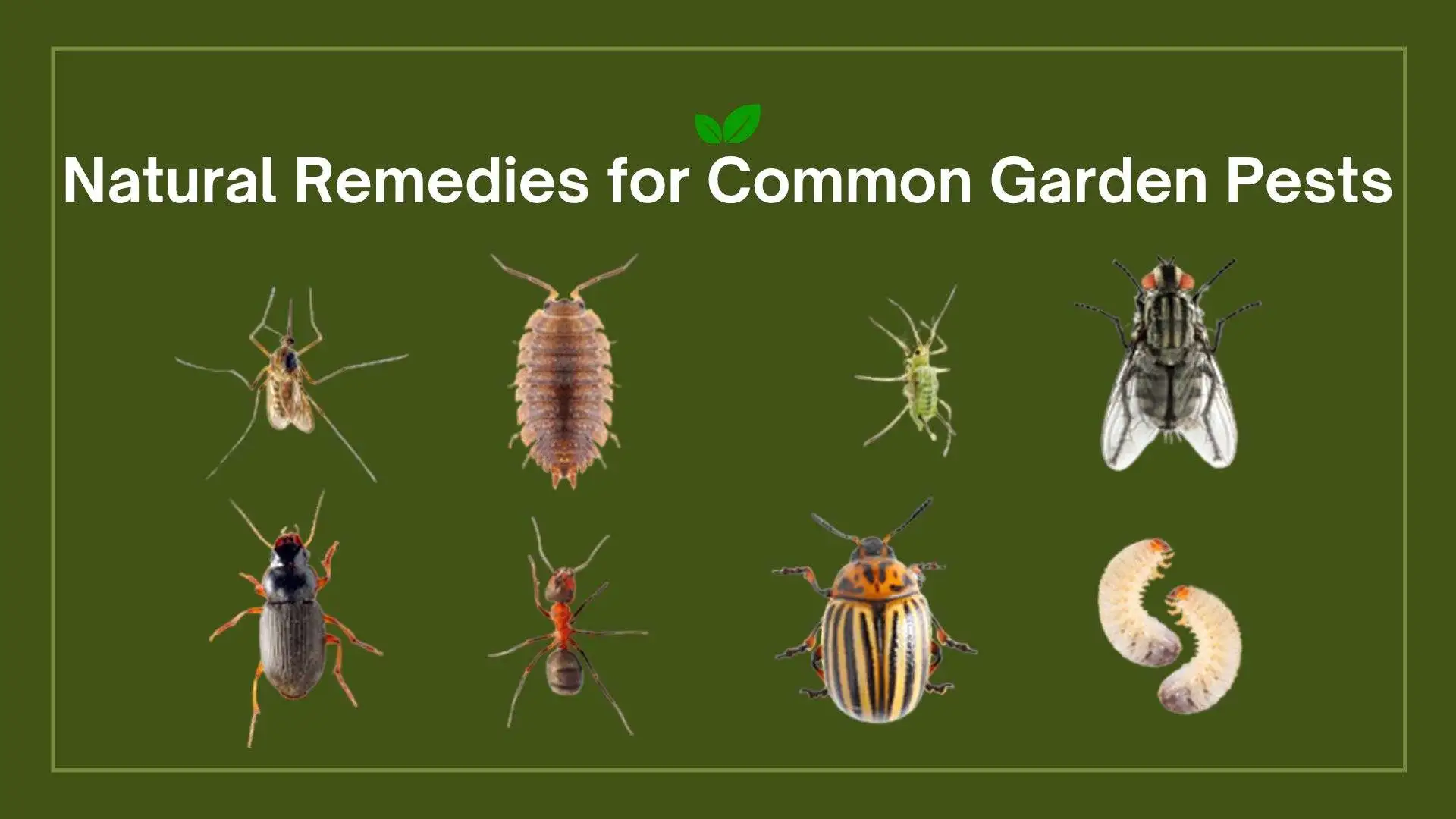
Using natural remedies also has the added benefit of protecting beneficial insects like bees and ladybugs. These remedies can be applied directly to plants without causing harm to the surrounding ecosystem. By making the switch to natural pest control, gardeners can enjoy a healthier garden while minimizing their environmental impact.
Using Organic Pesticides Safely in Your Garden
Organic pesticides can be an excellent choice for dealing with pests, but they must be used with care. Insecticidal soaps and pyrethrin-based sprays are effective at controlling garden pests without harming the environment. When using organic pesticides, it’s important to follow the instructions closely to avoid overuse, which can affect plant health.
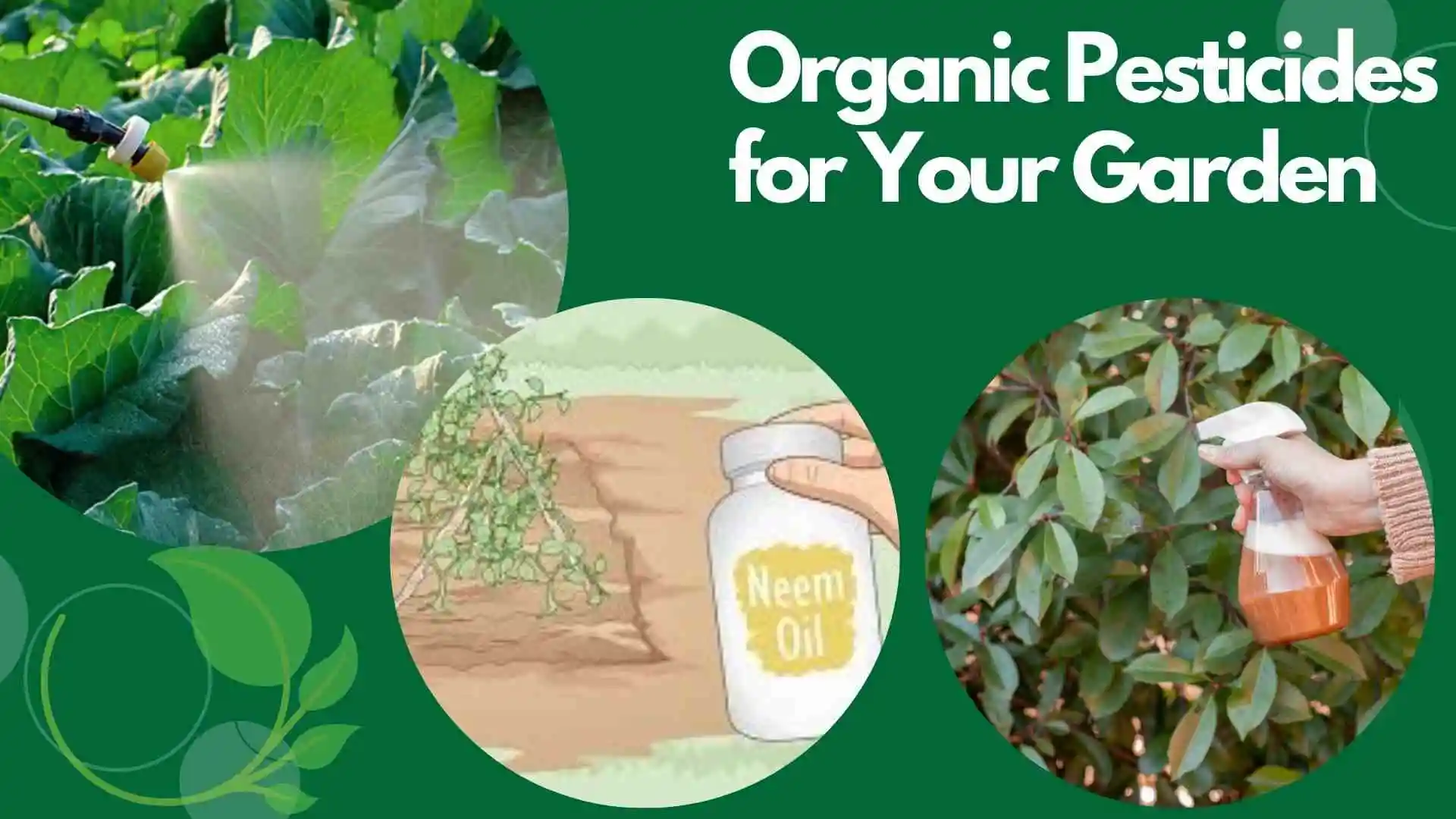
Applying these pesticides at the right time is just as important as using the right product. It’s best to apply them early in the morning or late in the evening when beneficial insects are less active. By using organic pesticides responsibly, you can protect your plants from pests without putting the ecosystem at risk.
How to Keep Invasive Pests Out of Your Garden?
Invasive pests, such as Japanese beetles and aphids, can quickly overwhelm your garden. Preventing them from entering your garden in the first place is the best defense. Start by keeping your garden clean and removing any dead plant material, which can attract pests. Regularly check plants for any signs of pests to catch the problem early.
Another helpful strategy is planting pest-resistant varieties or companion plants like marigolds, which naturally repel certain insects. If pests are already present, take immediate action by using natural repellents or organic treatments. These simple steps can help protect your garden from the harmful effects of invasive pests.
| Method | Benefits | How to Use |
|---|---|---|
| Natural Remedies | Eco-friendly, safe for plants and beneficial insects | Use garlic spray, neem oil, or diatomaceous earth |
| Organic Pesticides | Targets pests without harming the ecosystem | Apply insecticidal soap or pyrethrin-based sprays |
| Invasive Pest Control | Keeps harmful pests out, reduces damage to plants | Plant pest-resistant varieties, remove weeds, use barriers |
Identifying and Treating Home Gardening Issues – Diseases
Garden diseases can spread quickly and damage plants if left untreated. Diseases like blight, powdery mildew, and root rot can weaken plants, affecting growth and yields. In 2025, gardeners are more aware of the importance of identifying plant diseases early to prevent them from spreading. Recognizing the symptoms of these diseases is key to effective treatment and ensuring your garden stays healthy.
Once identified, treating plant diseases promptly can make a big difference in preventing further damage. From natural remedies to organic treatments, there are many ways to manage garden diseases without using harmful chemicals. Understanding how to handle each disease will help keep your plants strong and thriving throughout the year.
| Disease | Signs & Symptoms |
|---|---|
| Powdery Mildew | White, powdery substance on leaves |
| Blight | Brown or black spots on leaves, stems, and fruits |
| Root Rot | Yellowing leaves, wilting, foul smell from soil |
Common Home Gardening Issues Diseases and Their Symptoms
Several common plant diseases affect gardens each year, each with distinct symptoms. For example, powdery mildew presents as a white, powdery substance on leaves, while blight causes dark spots and wilting. Root rot is another issue that results in yellowing leaves and stunted growth, often due to overwatering or poor drainage. Identifying these signs early is crucial for stopping the spread of disease.
Each disease requires a different approach to treatment, so it’s important to monitor your plants regularly for any changes. By keeping an eye out for early symptoms, you can take action before the disease becomes severe. Early intervention is the best way to protect your plants and maintain a healthy garden.
Organic Solutions for Home Gardening Issues – Disease Control
Organic solutions are a safe and effective way to control garden diseases without harming the environment. Homemade remedies like baking soda sprays can be used to treat fungal diseases like powdery mildew. Another option is neem oil, which acts as both a fungicide and insect repellent, protecting plants from a variety of threats. These natural treatments can be applied directly to the affected areas without causing damage to the plant or surrounding ecosystem.
In addition to homemade solutions, there are also store-bought organic fungicides that are both effective and safe to use. Using organic products allows gardeners to manage plant diseases while maintaining a healthy, chemical-free garden. Regularly applying these treatments can help keep your garden disease-free and thriving throughout the growing season.
When to Use Fungicides in Your Home Gardening Issues
Fungicides are helpful in treating fungal infections, but timing is critical. It’s important to apply fungicides at the first sign of disease, as they work best when used early. Overusing fungicides can harm plants or beneficial insects, so only apply them when necessary. Early morning or late evening is the best time to apply fungicides, as it reduces the risk of burning your plants under the sun.
If the disease persists, repeat the treatment as directed, ensuring that you follow the guidelines on the product label. Fungicides should be part of an integrated approach to disease management, which includes proper plant care, good soil health, and regular monitoring. With the right timing and care, fungicides can effectively help control diseases and protect your garden.
Soil Health – The Foundation of a Thriving Home Gardening Issues
Soil health is the backbone of any successful garden. Healthy soil supports plant growth by providing essential nutrients, moisture, and proper structure for strong roots. In 2025, more gardeners are learning the importance of maintaining good soil health, which includes regular testing and care. Understanding soil health is key to growing vibrant, productive plants all year long.
Improving soil health goes beyond just using fertilizers. It involves adding organic matter like compost, maintaining good drainage, and promoting soil structure. Healthy soil also supports beneficial organisms like earthworms and microbes, which are crucial for plant health. With proper care, you can create a garden that flourishes thanks to rich, balanced soil.
| Soil Issue | Symptoms | Solution |
|---|---|---|
| Nutrient Deficiency | Yellowing leaves, stunted growth | Add compost, organic fertilizers, or specialized nutrient amendments |
| Soil pH Imbalance | Poor plant growth, yellowing leaves | Test pH, add lime to raise pH or sulfur to lower it |
How to Fix Nutrient Deficiency in Your Soil
Nutrient deficiencies in soil can prevent plants from growing properly. If your plants have yellowing leaves or are growing slowly, it might be due to a lack of nutrients. The first step is to test your soil to identify which nutrients are missing, such as nitrogen or potassium. Once you know the deficiency, amend the soil with compost, organic fertilizers, or other soil amendments to restore balance.
Adding organic materials not only fixes nutrient gaps but also improves soil texture and water retention. Regular crop rotation can also help prevent soil from losing essential nutrients. By paying attention to these details, you can give your plants the nutrients they need to thrive.
Understanding Soil pH and Its Role in Plant Health
Soil pH plays a crucial role in plant health, as it affects how well plants can absorb nutrients. Soil pH is measured on a scale from 1 to 14, with 7 being neutral. Most plants thrive in slightly acidic to neutral soil, with a pH of 6-7. If your soil’s pH is too high (alkaline) or too low (acidic), it can limit nutrient uptake, leading to poor growth and weak plants.
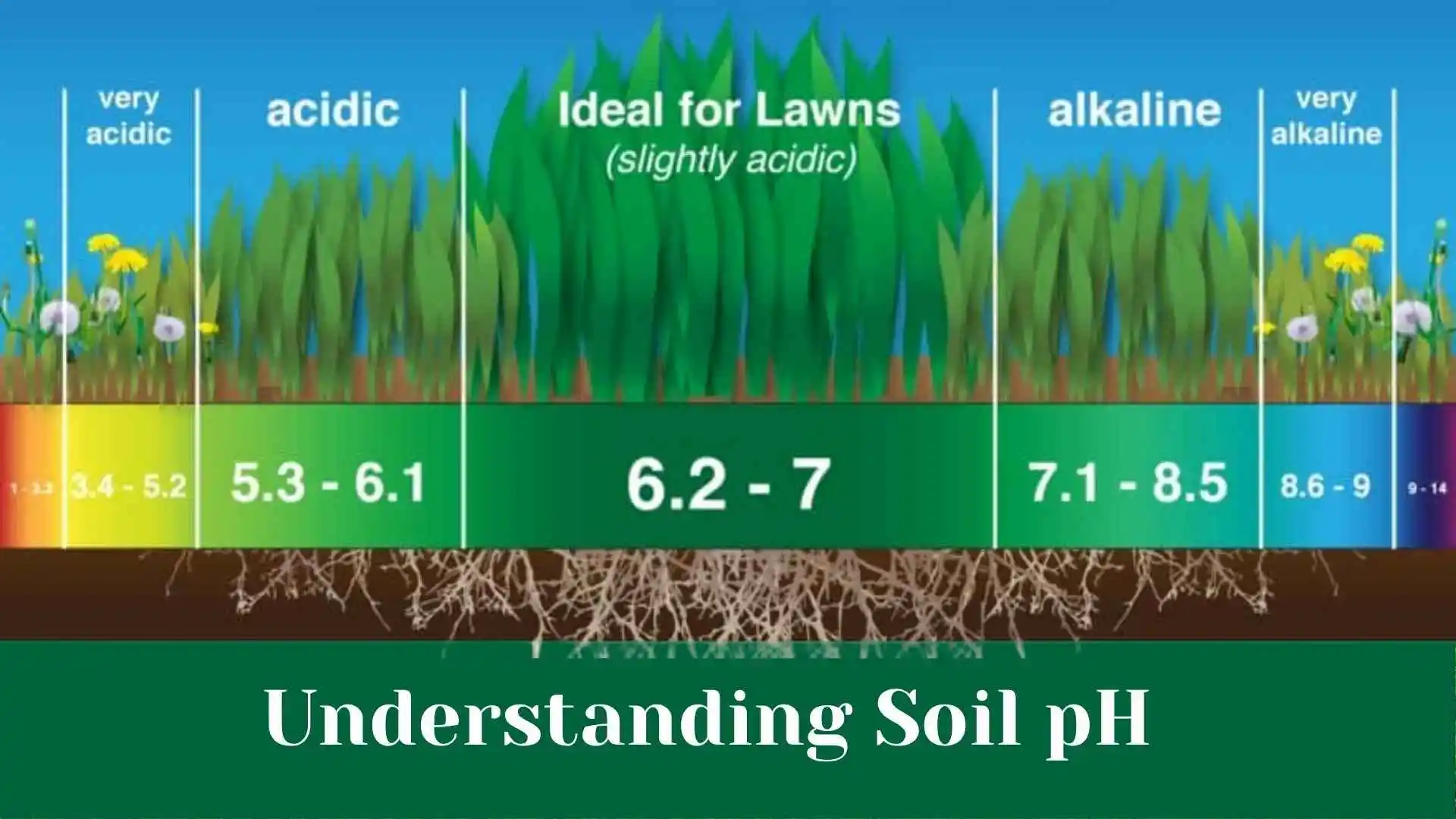
To improve your soil’s pH, you can add organic materials like sulfur to lower pH or lime to raise it. It’s important to regularly test the soil’s pH and adjust it based on the needs of your plants. By understanding and managing soil pH, you can create the perfect environment for healthy, thriving plants in your garden.
Insects and Worms – Friends or Foes in Your Garden?
Insects and worms play an important role in your garden, but they can be both helpful and harmful. Some insects, like ladybugs and bees, help pollinate flowers and control pests. However, others, like aphids and caterpillars, can damage your plants. In 2025, many gardeners are learning how to make the most of these creatures while keeping harmful ones in check.
By understanding which insects and worms benefit your garden, you can create a balanced environment that supports healthy growth. Managing the balance between helpful and harmful pests is key to maintaining a thriving garden. This approach ensures that your plants are well taken care of without the need for harsh chemicals.
Beneficial Insects for Natural Pest Control
Beneficial insects are a gardener’s best friend. Ladybugs, lacewings, and predatory beetles can help control pest populations by eating harmful bugs like aphids and mealybugs. In 2025, many gardeners are turning to these natural pest controllers to reduce the need for chemical treatments. By attracting or introducing these insects into your garden, you can maintain a healthy balance of pest control.
You can encourage beneficial insects by planting a variety of flowers and herbs, such as lavender, dill, and marigolds, which attract these helpful creatures. Another option is to create habitats like insect hotels or small patches of wildflowers to encourage their presence. With these methods, you can naturally manage pests while keeping your garden safe.
Dealing with Harmful Insects and Garden Worms
Not all insects and worms are beneficial. Some, like aphids and root worms, can quickly damage your plants and harm your garden’s growth. If you notice pests such as these, it’s important to act fast to prevent an infestation. Organic solutions like neem oil, insecticidal soap, or even hand-picking the pests off plants can be effective.
Worms can also be both helpful and harmful. While earthworms improve soil quality, harmful worms, like root-eating nematodes, can destroy your plants’ roots. Managing these harmful insects and worms is all about early detection and using natural or organic methods to keep them under control.
| Insect/Worm | Role in the Garden |
|---|---|
| Beneficial Insects | Pollinate plants, control pests (e.g., ladybugs, bees) |
| Harmful Insects | Damage plants by feeding on leaves and roots |
| Earthworms | Improve soil structure, help decompose organic matter |
How to Create a Balanced Ecosystem in Your Garden
Creating a balanced ecosystem in your garden means having the right mix of insects, worms, and plants. A healthy balance ensures that beneficial insects thrive while harmful ones are kept in check. To build this ecosystem, plant a variety of flowers, herbs, and shrubs that attract good insects and provide shelter for them. Also, avoid using harsh chemicals that can harm helpful creatures.
A diverse garden with plenty of natural predators will help keep pests at bay. You can also introduce companion plants that repel harmful insects, creating a natural form of pest control. By fostering a balanced ecosystem, you’ll support the health of your plants and maintain a sustainable, chemical-free garden.
Seasonal Home Gardening Issues Maintenance Tips
Taking care of your home gardening issues year-round requires adjusting your approach to the changing seasons. Each season brings new challenges, from preparing the soil in spring to protecting plants in the cold months. In 2025, gardeners are paying more attention to seasonal care to ensure their gardens stay healthy and productive. Understanding the needs of your garden throughout the year is key to maintaining its beauty and productivity.
By following seasonal maintenance tips, you can give your plants the best care possible at every stage. From prepping your garden for spring to getting it ready for winter, each season requires a different set of tasks. Proper care at the right time helps plants thrive and ensures a successful growing season.
Spring Gardening Prep – What You Need to Know
Spring is the time to prepare your garden for the growing season. Start by cleaning up debris, trimming dead plants, and checking your soil’s health. In 2025, many gardeners focus on testing the soil’s pH and adding compost or organic matter to improve nutrient levels. This is also the perfect time to plant early-season crops like peas, lettuce, and herbs.
Additionally, spring is when you should check for pests and diseases, as they can start to appear with the warming weather. Planting flowers and shrubs that attract beneficial insects, like bees and ladybugs, will help your home gardening issues thrive. With proper spring prep, your garden will be ready to grow strong and healthy throughout the season.
Summer Care – Keeping Your Garden Thriving in the Heat
Summer can be a tough time for plants, especially with the heat and dry conditions. In 2025, gardeners are focusing on strategies to keep their plants hydrated and cool. Ensure your plants receive adequate water early in the morning or late in the evening to reduce evaporation. Mulching around plants helps retain moisture and keeps the soil cool.
During summer, it’s important to regularly check for pests, as many insects are more active in the heat. Pruning plants to remove dead or yellowing leaves encourages better airflow and prevents disease. By keeping up with these tasks, your garden will stay strong, even in the summer heat.
Fall Garden Clean Up – Preparing for the Cold Months
As the weather cools in fall, it’s time to get your garden ready for the winter months. Start by clearing away dead plants, fallen leaves, and any debris that can harbor pests or disease. Fall is also the best time to add compost or organic matter to improve the soil for the next growing season. In 2025, gardeners are also planting winter crops, like kale or garlic, to continue harvesting through the colder months.
Protecting delicate plants from frost is another important fall task. Covering them with row covers or mulch helps insulate them against freezing temperatures. A thorough fall clean-up ensures your garden will be healthy and ready to bloom again in the spring.
| Season | Key Tasks |
|---|---|
| Spring | Clean garden, test soil, plant early-season crops |
| Summer | Water plants deeply, mulch to retain moisture, monitor pests |
| Fall | Clear debris, add compost, prepare for winter |
How to Improve Home Gardening Issues – Productivity and Health
Improving garden productivity and health is key to getting the most out of your plants. Healthy soil, proper watering, and effective pest control all contribute to a thriving garden. In 2025, gardeners are focusing on sustainable methods like companion planting and mulching to boost both productivity and plant health. With the right strategies, you can grow a flourishing garden that thrives throughout the season.
By using natural techniques and optimizing care, you can enhance both the quality and quantity of your crops. Whether it’s choosing the right plants to work together or ensuring consistent watering, small changes can lead to big improvements. Let’s explore how you can take your garden’s health and productivity to the next level.
Companion Planting for a Healthier Garden
Companion planting is a great way to naturally improve garden health. This technique involves planting certain plants together that support each other’s growth. For example, planting basil near tomatoes can help repel pests and improve flavor. In 2025, more gardeners are discovering the benefits of this natural pest control method and the boost it gives to plant growth.
Companion planting also enhances soil health and attracts beneficial insects. Some plants, like marigolds and garlic, can deter harmful insects, keeping your garden safe from pests. By carefully choosing companion plants, you can create a harmonious, healthier environment for your crops.
The Best Mulching Techniques for Your Home Gardening Issues
Mulching is one of the simplest and most effective ways to improve garden health. It helps retain moisture, reduces weeds, and maintains an even soil temperature. In 2025, gardeners are using organic mulches like straw, leaves, and grass clippings to provide all these benefits while also enriching the soil as they decompose. Proper mulching can significantly reduce the need for frequent watering and weeding.
To apply mulch, spread a 2-3 inch layer around your plants, making sure to keep it away from the stems. This helps to retain moisture and prevents the growth of weeds. Using mulch also adds organic matter to the soil, improving its structure and providing nutrients to your plants over time.
Effective Watering Strategies for Optimal Growth
Watering your garden correctly is essential for healthy growth and productivity. In 2025, gardeners are focusing on water-efficient techniques to ensure plants get the right amount of water without wasting resources. Watering deeply but less frequently encourages plants to develop strong roots that can better withstand dry periods.
Using tools like drip irrigation or soaker hoses can help water plants more efficiently, reducing evaporation and runoff. It’s also important to water early in the morning or late in the evening to prevent water loss due to the sun’s heat. By following these watering strategies, you’ll keep your plants hydrated and promote optimal growth throughout the growing season.
Troubleshooting Common Home Gardening Mistakes
Home gardening is a rewarding hobby, but it comes with its share of challenges. Even the most experienced gardeners make mistakes, whether it’s overwatering, poor plant growth, or sunburned leaves. In 2025, more gardeners are focusing on understanding the most common mistakes and learning how to fix them. By recognizing these issues early, you can improve the home gardening issues and enjoy a thriving landscape.
Fixing common home gardening issues doesn’t always require major changes. Often, it’s about adjusting a few simple things, like watering schedules or plant placement. With the right knowledge, you can troubleshoot problems and keep your home gardening issues on track for success.
Overwatering vs Underwatering – How to Find the Right Balance
One of the most common home gardening issues is either overwatering or underwatering your plants. Both can lead to unhealthy plants, but knowing the signs of each can help you find the right balance. Overwatering often causes yellowing leaves, root rot, and wilting, while underwatering typically results in dry, crispy leaves and slow growth. In 2025, gardeners are focusing on watering deeply and less frequently to promote healthy root development.
To find the right balance, always check the soil before watering. If the top inch of soil is dry, it’s time to water. Using a drip irrigation system or soaker hoses can help provide consistent moisture while avoiding overwatering. By adjusting your watering routine based on your plants’ needs, you can prevent these common mistakes and keep your garden healthy.
Preventing and Correcting Poor Plant Growth
Poor plant growth is often a result of several factors, such as nutrient deficiencies, inadequate sunlight, or improper soil. If your plants are growing slowly or looking weak, it could be due to one of these issues. In 2025, gardeners are focusing on providing plants with proper nutrition, ensuring they get enough light, and using quality soil for strong root development. Checking your plants regularly for signs of stress is the first step in addressing poor growth.
To correct poor growth, consider adjusting the environment around your plants. Add organic compost to improve soil quality, move plants to sunnier spots, or give them more space to grow. By identifying the root cause of poor growth, you can take targeted steps to help your plants thrive and reach their full potential.
How to Save Plants Affected by Overexposure to Sunlight
Overexposure to sunlight can cause serious damage to plants, resulting in sunburned leaves, wilting, and slow growth. Some plants are sensitive to the sun’s intense heat, especially in the peak summer months. In 2025, gardeners are focusing on providing shade for vulnerable plants and adjusting their care routines to prevent sun damage. Understanding how to protect your plants from too much sun is key to keeping them healthy during hot weather.
To save plants affected by overexposure, move them to a shadier spot or use shade cloth to reduce direct sunlight. Watering plants in the early morning or late evening can also help them recover. Adding mulch around the base of plants can keep the soil cool and prevent further stress. With these adjustments, your plants can bounce back and continue to grow strong.
Should You Seek Professional Help for Your Home Gardening Issues?
While manyhome gardening issues can be solved with a bit of research and care, sometimes professional help is the best solution. Whether it’s tackling a stubborn pest problem or designing a complex garden layout, experts can provide the knowledge and experience needed for the best results. In 2025, gardeners are increasingly turning to professionals for advice and assistance, especially for more complex or persistent issues.
Seeking professional help doesn’t mean you’re not capable—it’s about ensuring the health and longevity of your garden. Sometimes, the right guidance can save you time, effort, and even money in the long run. Knowing when to ask for help can make a significant difference in the success of your garden.
When to Consult a Professional Gardener or Pest Control Expert
There are times when a professional gardener or pest control expert can really make a difference. If pests are causing severe damage to your plants or if diseases are spreading despite your efforts, it may be time to call in an expert. In 2025, pest control specialists use eco-friendly methods to target harmful pests like aphids, mites, and beetles without harming your garden.
A professional gardener can also help when you’re unsure about plant selection, soil health, or garden design. Their expertise can save you from making costly mistakes and help your garden thrive in the long run. If the issue is too overwhelming to handle alone, hiring an expert can ensure the health of your garden.
| Situation | When to Seek Help |
|---|---|
| Pest Infestation | When pests are too numerous to control on your own |
| Diseases | When diseases are spreading rapidly or are too complex to treat |
| Garden Design | If you need help with layout, plant selection, or soil quality |
How to Find Trustworthy Home Gardening Issues Services in 2025
Finding the right home gardening issues service is important for the health of your garden. Start by asking friends for recommendations or checking online reviews for trustworthy professionals. In 2025, many gardeners prefer services that focus on organic or sustainable practices to keep their garden healthy without chemicals.
Before hiring, make sure to check the qualifications of the gardener or pest control expert. Ask about their experience, certifications, and the methods they use. A good professional will listen to your needs, offer clear advice, and be transparent about costs, helping you make an informed decision.
Conclusion
Gardening can be a fulfilling hobby, but it does come with its challenges. Whether you’re dealing with pests, diseases, or the impacts of unpredictable weather, understanding the root cause of your garden’s issues is essential for finding the right solution. By identifying problems early, you can take steps to protect your plants and keep your garden healthy year-round.
The key to a thriving garden in 2025 is proactive care. Regularly inspect your plants for pests and diseases, use natural remedies to control them, and provide your plants with the right care based on the season. With good soil health, proper watering, and seasonal maintenance, you can prevent many common home gardening issues. If problems persist, consulting a professional can save you time and effort, ensuring your garden remains beautiful and productive.
